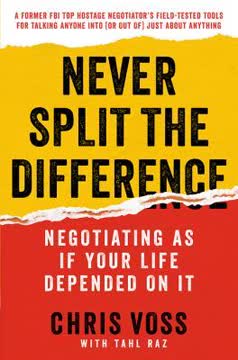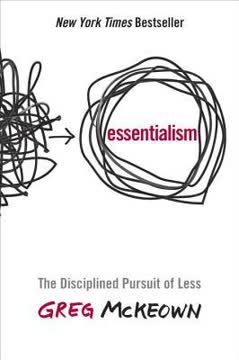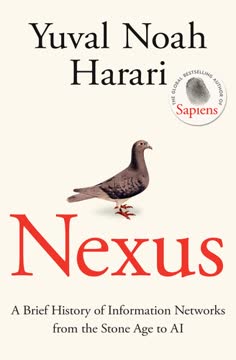つの重要なポイント
1. 紛争への反応は無意識で、スクリプト化され、集団の利益のためにある
紛争への反応は無意識で、スクリプト化され、集団の利益のためにある。
自動的な反応。 紛争への反応はしばしば意識的な思考よりも速く起こり、予測可能なパターンや「スクリプト」に従います。これらのスクリプトは深く根付いており、主に集団の結束と安定を維持するための進化的な目的を果たします。
個人よりも集団。 これらの自動的な反応は必ずしも個人に利益をもたらすわけではありませんが、一般的には集団の統合を保つために機能します。これにより、機能不全な関係に留まったり、非生産的な議論を繰り返したりするような、一見非合理的な行動が引き起こされることがあります。
認識が鍵。 これらの無意識のパターンを認識することが、紛争への反応を制御するための第一歩です。反応が個人的な選択ではなく、プログラムされた反応であることを理解することで、紛争をより効果的に処理するための意識的な選択が可能になります。
2. 三つの脳のレベル:トカゲ、サル、人間
トカゲは生存だけを気にし、サルよりも優先される。では、どうして兵士が存在するのか?
トカゲ脳:生存。 我々の脳の最も古い部分で、即時の生存ニーズにのみ焦点を当てています。これは、生命の危機に直面したときに高次の思考を凌駕する本能的な反応を引き起こします。
サル脳:社会的。 この部分は社会的な相互作用、地位、集団のダイナミクスを処理します。多くの感情的な反応の源であり、社会的な屈辱と物理的な危険を区別することができません。
人間脳:合理的。 最も新しい部分で、抽象的な思考や問題解決が可能です。紛争の状況では、他の二つの部分に凌駕されることがよくあります。
- これらのレベルを理解することで:
- 紛争時にどの「脳」が支配しているかを認識する
- より良い結果を得るために人間脳を意識的に活用する
- 他人がどのレベルで動いているかを予測する
3. マズローの欲求階層が紛争のダイナミクスに影響を与える
問題を無視しながら解決することはできない。
欲求が行動を駆動する。 マズローの欲求階層は、紛争の背後にある動機を理解するための枠組みを提供します。階層の異なるレベルで動いている人々は、全く異なる優先事項や認識を持つことがあります。
安全が自己実現に先立つ。 低レベルの欲求(生理的、安全)が満たされなければ、高レベルの関心事(所属、尊厳、自己実現)を効果的に対処することはできません。これにより、外部の人には些細に見える紛争が、関与する人々にとっては非常に重要である理由が説明されます。
紛争の起源が重要。 紛争がどの階層の欲求から生じているかを認識することで、適切な対応が導かれます:
- 生存レベルの紛争は即時的で実践的な解決策を必要とする
- 社会レベルの紛争は感情的な承認や地位の考慮が有益
- 自己実現の紛争はより深い価値観や信念に関わることがある
4. 役に立たない紛争スクリプトを認識し、中止する
もし引っかかると、スクリプトに乗ってしまう。怒りを感じたり、ラベルを貼ったり、誰が一番かを示したくなったりする…その兆候を知っているはずだ。それを認識し、フックを吐き出す必要がある。
スクリプトの認識。 予測可能な紛争パターンに陥っていることを認識することを学びます。一般的な兆候には以下が含まれます:
- 感情的な反応が合理的な思考を凌駕する
- 問題解決よりも勝つことに焦点を当てる
- 他人を無視するためにラベルやステレオタイプを使用する
サイクルを断ち切る。 スクリプトを認識したら、意識的に行動を変える:
- 深呼吸して自分の感情状態を認める
- 個人的な感情ではなく実際の問題に焦点を当てる
- 「私たち」という言葉を使って協力を促進する
反応を選ぶ。 スクリプトに従う以外にも選択肢があることを忘れないでください:
- スクリプトが実際に役立つ場合は続ける
- より生産的なスクリプトに切り替える
- スクリプトを完全に中止し、核心の問題に直接対処する
5. 明確な境界を設定し、共通の基盤から作業する
「ノー」は完全な文である。
明確な境界。 紛争を管理するためには、明確な境界を設定し、強制することが重要です。これには以下が含まれます:
- 何が許容されるか、何が許容されないかを明確にする
- 簡潔で直接的な言葉を使う
- 設定した境界を強制する準備をする
共通の基盤に焦点を当てる。 違いにこだわるのではなく、合意点や共有経験を積極的に探します。このアプローチは:
- 信頼とラポールを築く
- コミュニケーションを容易にする
- 問題解決のための基盤を作る
文化的な考慮事項。 境界設定と共通の基盤は文化によって異なる場合があります。アプローチを適応させ、疑問がある場合は現地の規範や期待について確認することが重要です。
6. 紛争における評判とアドレナリンの管理
資源 + 他者への助け = 尊敬
ポジティブな評判を築く。 あなたの評判は、一貫した行動によって築かれます。以下の点で評判を育てます:
- 信頼性
- 公平性
- 他者を助ける意欲
アドレナリンの認識。 紛争においてアドレナリンが自分や他人にどのように影響するかを認識します:
- 男性はしばしば急激なスパイクと急降下を経験する
- 女性はゆっくりとしたビルドアップと長続きする効果を持つ
- この知識を使って難しい会話や介入のタイミングを計る
資源管理。 尊敬は資源(スキル、知識、思いやり)を持ち、それを他者の利益のために使うことで得られます。この「アルファ」ステータスは、一貫した助けとなる行動を通じて得られ、支配的な行動では得られません。
7. 暴力は強制のレベルのスペクトラム上に存在する
あなたのレベルの上は悪く、あなたのレベルの下は弱い。
強制のスペクトラム。 暴力と強制は、微妙な社会的圧力から致命的な力までの連続体に存在します。レベルは次の通りです:
- 優しい
- 操作的
- 断定的
- 攻撃的
- 暴行的
- 致命的
快適ゾーン。 人々は通常、自分の慣れたレベルで快適に行動し、上のレベルを「悪い」と見なし、下のレベルを「弱い」と見なします。この認識のギャップは誤解やエスカレーションを引き起こす可能性があります。
レベルに応じた対応。 どのレベルの強制に対処しているかを認識し、それに応じて対応します:
- 低レベルはしばしば社会的スキルと感情的知性を必要とする
- 高レベルは物理的な介入やデエスカレーション技術を必要とすることがある
- レベルを上げる(力を増す)のは難しいが、レベルを下げるのは容易
8. アクティブリスニングと戦術的な謝罪が紛争を和らげる
このマニュアルのすべては露骨に操作的ですが、ここがポイントです—すべてのコミュニケーションは操作です。
アクティブリスニングの力。 アクティブリスニングを実践して情報を収集し、ラポールを築きます:
- 話し手に集中する
- 理解を確認するためにパラフレーズする
- 明確化の質問をする
- 感情を判断せずに認める
戦術的な謝罪。 緊張を和らげるために戦術的に謝罪を使用します:
- 「あなたが怒っていることを申し訳なく思います」は、過失を認めずに感情を認める
- 「次に何をすべきか?」と続けて問題解決に焦点を当てる
- 謝罪することで、弱く見えるのではなく、成熟して合理的に見えることが多い
操作の認識。 すべてのコミュニケーションにはある程度の影響や操作が含まれていることを認識します。重要なのは、これらのツールを倫理的に使用して、関与するすべての当事者にとってポジティブな結果を達成することです。
9. 捕食者と生存レベルの脅威には異なるアプローチが必要
社会的暴力を非社会的なものとして扱うと、人々を不必要に傷つける。非社会的暴力を社会的なものとして扱うと、自分が傷つく。
脅威の種類を区別する。 社会的な紛争(地位、所属)と非社会的な脅威(捕食的、生存)を区別することが重要です:
- 社会的な紛争は予測可能なスクリプトとルールに従う
- 非社会的な脅威は社会的な規範や期待に従わない
社会的紛争のアプローチ:
- デエスカレーション技術を使用する
- 共有価値や集団の規範に訴える
- ウィンウィンの解決策を模索する
非社会的脅威への対応:
- 個人の安全を最優先する
- 厳しい境界を設定し、強制する
- 必要に応じて適切な力を使用する準備をする
適応力が鍵。 脅威の性質を迅速に評価し、それに応じて対応を適応させる訓練を行います。紛争の種類を誤認すると、効果的でないか危険な反応を引き起こす可能性があります。
最終更新日:
FAQ
What's "Conflict Communication: A New Paradigm in Conscious Communication" about?
- Overview: "Conflict Communication" by Rory Miller explores a new approach to understanding and managing conflict through conscious communication. It emphasizes recognizing subconscious patterns and scripts in human interactions.
- Purpose: The book aims to equip readers with tools to identify and alter these patterns, improving personal and professional relationships.
- Structure: It is divided into sections covering background concepts, fundamental principles, and practical tactics for managing conflict effectively.
Why should I read "Conflict Communication"?
- Practical Tools: The book provides actionable strategies for resolving conflicts, which can be applied in various settings, from personal relationships to professional environments.
- Insightful Framework: It offers a unique perspective on human behavior, helping readers understand the subconscious scripts that drive conflict.
- Improved Interactions: By applying the concepts, readers can enhance their communication skills, leading to more productive and harmonious interactions.
What are the key takeaways of "Conflict Communication"?
- Subconscious Scripts: Human responses to conflict are often subconscious and follow predictable patterns, which can be identified and altered.
- Three Brains Model: The book introduces the concept of the Lizard, Monkey, and Human brains, each playing a role in conflict dynamics.
- Practical Techniques: It provides specific tools and techniques, such as active listening and tactical apologies, to manage and resolve conflicts effectively.
How does Rory Miller define the "Three Brains" in conflict communication?
- Lizard Brain: This is the oldest part of the brain, focused on survival instincts and physical responses. It is triggered by fear and operates on a primal level.
- Monkey Brain: Corresponding to the limbic system, it is concerned with social behavior, status, and emotions. It often drives conflict through subconscious scripts.
- Human Brain: The neocortex, responsible for rational thought and problem-solving. It is slower but capable of overriding the other two brains with conscious effort.
What is the significance of "scripts" in conflict communication according to Rory Miller?
- Predictable Patterns: Scripts are subconscious patterns of behavior that people follow during conflicts, often without realizing it.
- Stability Over Happiness: These scripts prioritize group stability over individual happiness, leading to repetitive and unresolved conflicts.
- Recognizing and Altering: By recognizing these scripts, individuals can choose to alter them, leading to more effective conflict resolution.
How can "active listening" improve conflict communication?
- Intelligence Gathering: Active listening involves receiving information accurately and encouraging the other person to keep talking, which helps gather valuable insights.
- Emotional Acknowledgment: It requires acknowledging both your own and the other person's emotional states, which can de-escalate tension.
- Clarification and Engagement: By paraphrasing and asking clarifying questions, active listening ensures understanding and keeps the conversation focused on resolving the issue.
What is the "Tactical Apology" and how is it used in conflict communication?
- Empathy Without Responsibility: A tactical apology involves saying, "I'm sorry you're upset," which shows empathy without assuming responsibility for the issue.
- Script Completion: It helps complete the conflict script, allowing both parties to move forward and address the real problem.
- Leadership and Maturity: Offering a tactical apology can demonstrate leadership and maturity, often diffusing tension and facilitating resolution.
How does Rory Miller suggest handling "Monkey Problems" in conflict situations?
- Identify the Problem: Recognize when conflicts arise from status, territory, or protocol issues, which are common Monkey Problems.
- Address the Monkey Brain: Use strategies like raising the other person's status or acknowledging their role to appease the Monkey brain.
- Focus on the Human Problem: Shift the focus from the Monkey issues to the actual problem that needs solving, using rational and respectful communication.
What are the "Levels of Coercion" in violence as described by Rory Miller?
- Nice to Lethal: The levels range from nice (subtle social coercion) to lethal (extreme physical violence), each with increasing intensity.
- Comfort with Violence: People are comfortable at their level and often see the level above as wrong or violent.
- Understanding Levels: Recognizing these levels helps in assessing threats and understanding the dynamics of conflict and violence.
How can understanding "Social vs. Asocial Violence" aid in conflict communication?
- Social Violence: This involves communication and is often about status and group dynamics, with an audience present.
- Asocial Violence: Predatory and without witnesses, it involves a calculated risk/reward assessment by the aggressor.
- Appropriate Response: Understanding the type of violence helps in choosing the right response, whether it's de-escalation or self-defense.
What are some of the best quotes from "Conflict Communication" and what do they mean?
- "Your responses to conflict are subconscious, scripted, and for the good of the group." This highlights the automatic nature of conflict responses and the importance of recognizing and altering them for better outcomes.
- "You are physically incapable of making a good decision if you care." Emphasizes the impact of emotions on decision-making, advocating for a rational approach to conflict.
- "The Lizard, the Monkey, and the Human." Refers to the three-brain model, illustrating the different aspects of human behavior in conflict situations.
How can "Conflict Communication" by Rory Miller change my approach to conflict?
- Increased Awareness: By understanding the subconscious scripts and brain dynamics, you become more aware of your own and others' behavior in conflicts.
- Improved Skills: The book provides practical tools and techniques to manage and resolve conflicts more effectively.
- Empowerment: With these insights and skills, you can take control of conflict situations, leading to more positive and productive interactions.
レビュー
ロリー・ミラー著の『ConCom』は、紛争コミュニケーションに対する洞察に満ちたアプローチで高い評価を受けている。読者は、潜在的に暴力的な状況を鎮静化し、社会的ダイナミクスをナビゲートするミラーの経験に基づいたアドバイスを高く評価している。本書は人間の行動を「トカゲ脳」、「サル脳」、「人間脳」の反応に分解して説明しており、多くの人々に共感を呼んでいる。文章のスタイルが時折まとまりに欠けると感じる人もいるが、ほとんどの読者は、個人的な関係から職場環境に至るまで、さまざまな場面での紛争を理解し管理するための貴重なリソースと見なしている。
Similar Books

















